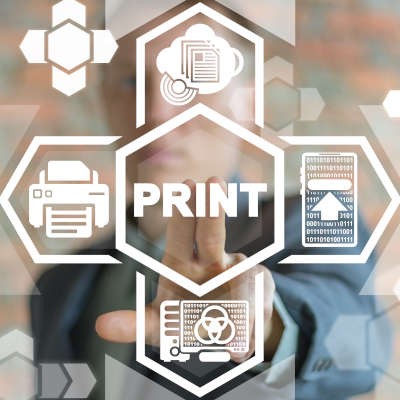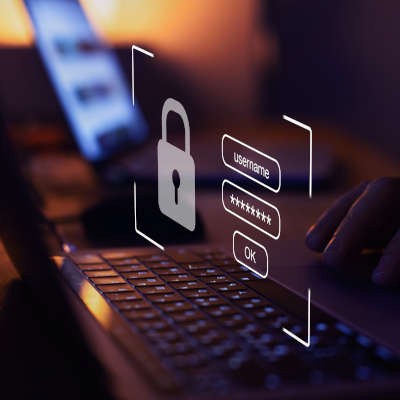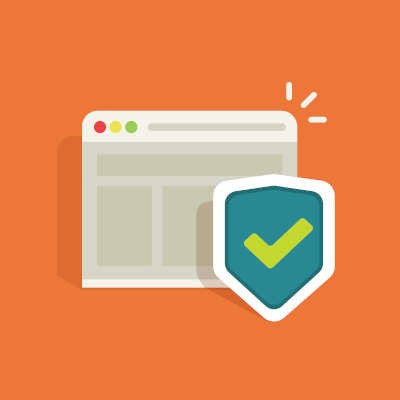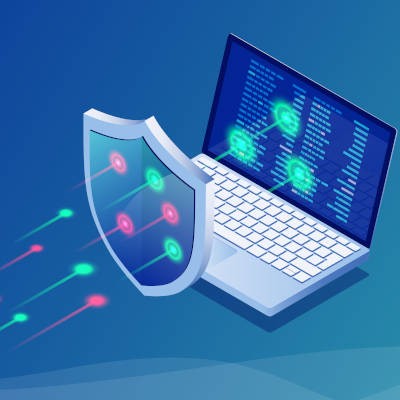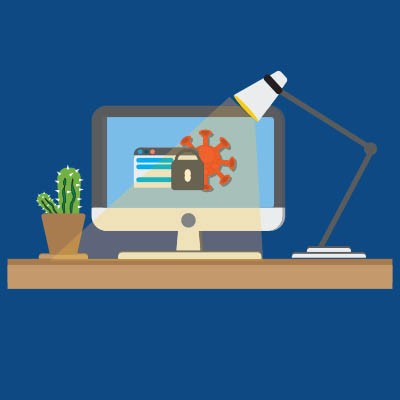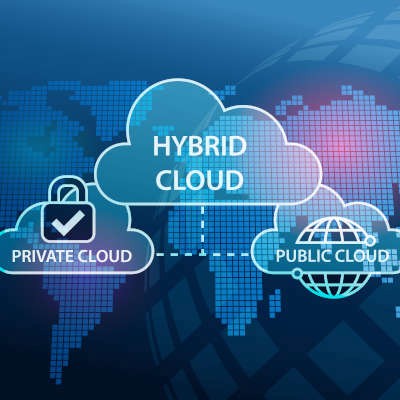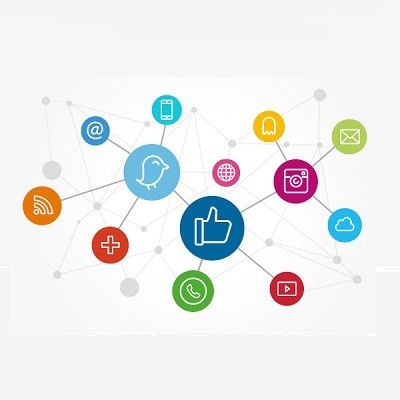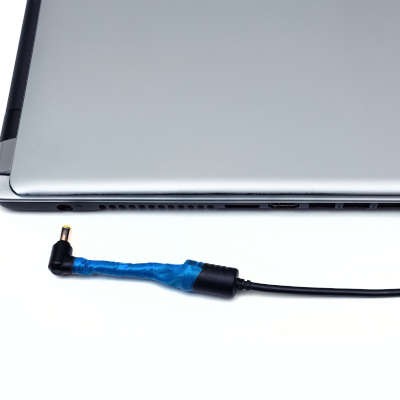Digital file storage has been a game-changer for many small businesses that rely on dynamic file retention. Instead of storing paper records in a huge room dedicated to file storage, businesses are focusing on digitizing their records and storing them electronically in cloud-based storage systems. This is a great alternative to all those printing costs.
k_Street Consulting, LLC Blog
It hasn’t been too long since connectivity required an actual physical connection between the connecting endpoints, making a wired connection the de facto option for businesses. However, now that wireless connectivity is so widely available, businesses now have a choice… but which is the better option? Let’s compare some of the pros of each to make the answer a little clearer.
When people talk about cybersecurity nowadays, there certainly seems to be a lot of emphasis put on phishing attacks and ransomware. This is for good reason. Not only can either of these attack vectors create significant difficulties for a business, they are often used in tandem. Let’s discuss why these threats are so potent, and why they so often show up together.
Mobility has to be one of the most talked about technology trends in business, and for good reason. Consumers use mobile. They use it for shopping, banking, checking the weather, for driving directions; and today, they use it for productivity. Let’s take a look at the rise in mobility and how small businesses can use it to their benefit.
Working in IT for any length of time will make you understand that it isn’t just novice workers that have trouble with their computers. In truth, about seven out of ten people can’t diagnose and fix simple IT problems. With that truth, it’s evident that any business that relies on IT, or at least on the productivity of people who use workstations, needs to have some type of strategy to keep those endpoints up, running, and managed proficiently.
A business has to have a telephone system. It is the simplest and most utilized method of communication. Many businesses, however, have to consider many variables before choosing theirs and it adds up to a lot of confusion. They need to take into account the cost, yes, but also the feature set, and the phone system’s ability to support much-needed mobility. Today, we will tell you about an option that checks all the boxes: a hosted VoIP system.
With today’s software solutions, the fact that collaboration is possible has helped many business processes move more efficiently. Despite this, there is also the potential for these solutions to contribute to confusion within your business. Take, for instance, changes people make in Microsoft Excel. Fortunately, Excel offers a means for you to track changes made.
We’re all familiar to some degree with the security measure known as CAPTCHA. You know the one—you usually see it when filling out forms or logging into sites online, where you have to prove that you’re a human being by identifying which of a variety of images fit a certain description. You may have noticed that these tests have gotten far more difficult over time. This is because, predictably, computers are getting better at beating them.
Email is important, but it seems to steal so much of your valuable time, doesn’t it?
Conquering your never-ending inbox can seem like a feat all in itself—let alone having it done before lunchtime. There’s an easier way, and when done properly, you’ll be able to spend less time sifting through your email and more time on the more important stuff.
There is no denying that the COVID-19 pandemic has caused some major operational shifts in how most businesses conduct themselves and their processes, with many of these shifts relying on technology solutions. While there’s still no telling for certain how much longer these conditions will persist, we predict that many businesses won’t abandon these solutions once the present danger has passed. Let’s discuss why we have this expectation.
Let’s face it, it is nearly impossible for the modern business to stay ahead of every cyberthreat. It is just too much to proactively ward against. Today’s best practices will try to keep your network from being breached and your data from being stolen, but they may just allow you to understand how your network was breached and how your data was stolen. Unfortunately, cybersecurity is not foolproof, but let’s look at a few strategies you can use to improve your chances of holding onto your data and keeping unwanted actors out of your network.
In the office, there are certain courtesies that most people follow, simply to make sure that the environment remains a peaceful and effective place to work. Working at home (as many have) makes many of these courtesies redundant. As many return to the office, resuming these manners will be important. Let’s go over some of the biggest shifts that your employees should remember as they head back to the office.
The technology your business uses is extremely important. One of the most important pieces of technology that you will routinely get is the workstation. Since it is the hub of productivity, there are certain variables that you need to consider when purchasing new workstations. This month, we will go through this process.
As the pandemic enters its third quarter, many places have the spread of the COVID-19 virus under control and are starting to open up offices and other workplaces. Ultimately, it is the business owners’ and managers’ decision whether or not to demand attendance in an office, as most jobs completed in one can be effectively completed from home. For businesses that are opening their office and inviting their employees back, technology is still going to play a significant role. Let’s take a look at what IT is going to be important for people returning to the office after all this time.
Regulations are put in place for a reason: the data you keep is sensitive. Within certain environments, it is extremely important to know how to navigate so as not to mistakenly expose information that has no business being shared. This month, we thought it would be a good time to talk about how to navigate these highly-regulated environments to ensure success and security.
Wi-Fi can be found in many homes and businesses alike, as it is perhaps the simplest means of connecting your various computers and mobile devices to the Internet without installing networking cables or risking going over any data caps you may deal with. Of course, some devices may take priority in such a setup, so it could be very useful for you to partition your Wi-Fi.
Every business owner wants to protect their data. Even if they don’t pour money into doing so, they typically still understand the importance of it. That’s why three-out-of-every-four businesses perform a backup at least once per week. It’s still good to be reminded how to make sure your backup can work for you. Let’s go over a few basic considerations to make if you want a data backup that you can trust.
Many businesses need their employees to do the same thing day-in and day-out. With that type of repetitiveness, situations pop up where some crucial stuff is overlooked. Employees that are distracted with their own productivity are susceptible to making mistakes that could have dire consequences for your business. This month we thought we would give you a few pointers on how to communicate the importance of vigilance to your dedicated employees.
A lot is made about data breaches and hackers, but I think you’d be surprised to find out that over 80 percent of cyberattacks are the result of stolen authentication credentials. This has led many security-minded IT administrators to try and find a better way than the old username & password strategy that we’ve all been using for as long as there have been user accounts. One organization that is actively making waves trying to replace the username/password combo is Microsoft. They are at the forefront of the move to passwordless authentication.
Email is one of the most popular business communication tools, with Google’s Gmail service being a popular choice with a market share of around 33.7 percent. It therefore makes sense that a lot of time is spent using Gmail, time that you might like spent on other initiatives. To help reduce the amount of time spent in Gmail on routine correspondence, we’re sharing how you can use Gmail templates to get the job done.
The COVID-19 pandemic has a lot of people spending a lot of time at home. As a result many people are getting more out of their Internet service. With school starting back up and people still working from home, the Internet needs to be available for everyone in the house. One of the best ways to make this happen is through Wi-Fi. Oftentimes, however, setting up a Wi-Fi connection can be troublesome. Today, we thought it would be useful to give you a couple of tips that can help you get the most out of your Wi-Fi network at home or in the office.
Google Chrome is currently used by 69 percent of global desktop Internet users, as of July of 2020. With such a large amount of people using Chrome, its security becomes even more important… which makes it all the worse that many people are unaware of the permissions that some of its extensions claim.
A schedule has long been the tool of choice for businesses to uphold their productivity, despite the challenges that managing everyone’s schedule can often present. Fortunately, today’s cloud solutions provide a means to overcome these challenges. Let’s explore the idea of smart scheduling and how it can make your entire process so much simpler.
For a lot of businesses, 2020 has seen some major challenges. Many SMBs feel like they are in a snow globe attached to a paint mixer that is always switched on. With all the problems laid out in front of them, many businesses have decided that in order to protect their business that they would subscribe to a strategy of proactivity. Let’s take a look at a couple of ways managed services help keep you ahead.
Today’s business has to prioritize its data security. There are endless examples of businesses that haven’t done enough. Some aren’t around anymore. To help you build a strategy, we’ve put together four questions that need to be asked to give you a chance to outwit and overcome the endless threats your company could run into online.
It may be hard to believe but Windows 10 has been around for five years. It may not have reached the on-every-device OS Microsoft had planned, but it still can be found on over a billion devices worldwide. That’s pretty impressive. Today, we will be taking a look at Microsoft’s plans for Windows 10 and how it might just be the last build of Windows.
In business, the more time your operations stutter, the more it costs. If downtime is extended, it can cause some serious problems for your business. This is true from the one-man band to the largest enterprise. This month we thought we would outline a couple ways that downtime can have a negative effect on your business aside from the obvious.
To effectively manage the risk that your business is under due to cybercriminals and their activities, it is important to acknowledge what attacks your business may soon have to deal with. Due to the increased accessibility of artificial intelligence and related processes, we predict that cybercrimes will likely use AI to their advantage in the very near future.
You don’t need to be repeatedly told just how important risk management is. If you did, you probably wouldn’t have made it this far. One problem you see from business owners today is that while they understand just how many problems there are--and which ones they need to find solutions for first--they want to grow their company so fast that they overlook potential problems and end up hurting their business as a result. This month, we thought we would talk a little bit about contingency planning and how, if it is done right, it can have a marked effect on your business’ ability to carry-on after a problematic event.
Remote work has certainly shown its utility over the past months, but despite this there are still many businesses who struggle to effectively run remote meetings. As remote meetings aren’t likely to phase out anytime soon, we felt it would be helpful to offer some tips to help make these meetings a little smoother for all involved.
We all use computers to run our businesses every day, and data has become a key factor in what most businesses do. Even smaller businesses have begun to use their data for strategic purposes, and in doing so have started a trend that has taken the world by storm. Let’s take a look at the data services that are designed to inform business owners and decision makers on how their business is actually working and how to improve operational effectiveness.
Windows 7 was the most popular operating system Microsoft ever created. It’s so popular that months after the software giant officially retired their record-breaking OS, some businesses continue to use it. Today, we will take a look at why some businesses haven’t moved off of Windows 7, and what effect it could have on their company.
With some motivation from the ongoing COVID-19 pandemic, many businesses are adjusting their approach to cybersecurity. Typically, businesses would take a more measured approach in their day-to-day security improvements, while swiftly acting if there was any kind of clear and present danger. While this proved effective, the current situation has now shifted priorities over to maintaining resilience. Let’s examine some of these shifts, and how an advantage can be gained through a consistent cybersecurity strategy.
Searching for something on Google seems stunningly self-explanatory: type in what you’re looking for, press Enter, and like magic, it appears. However, there is a lot more that you can do, if you know how to use Google’s full capabilities. Let’s go over how these capabilities can be harnessed to your advantage as you perform your next search.
Since the outbreak of the COVID-19 coronavirus has wreaked havoc across the globe, there has been a lot of hope and effort put towards developing a vaccine against it. Unfortunately, just as some experiments have produced promising results, hackers have begun targeting the research centers responsible. Let’s look at this situation to see what it can teach us.
Smartphones now come with a variety of ways that users can elect to unlock their device, from biometrics to tactile patterns to good, relatively old-fashioned personal identification numbers. Of course, not all these authentication measures secure your phone equally well. Let’s consider some of these measures to determine which one is best for your device’s security.
Google and Apple have recently started an initiative with local governments to try and help prevent the increased spread of COVID-19. Basically, this app would notify people if there were positive COVID-19 test results in their area. While this does bring up some major privacy concerns, we wanted to discuss something else today: the prevalence of false warnings that have already been forced onto mobile devices. Let’s dig in.
If you’re the average business user today, you probably rely on a smartphone to manage much of your life, both personally and in the professional sense. As our phones have become so central to our lives, hackers now have the opportunity to attack through malicious applications. For this week’s tip, we wanted to go over a few ways to tell that an app might be an attack in disguise.
Unfortunately, small businesses are having a hard time right now. If your operations are to continue throughout this time, some significant changes are going to be required. Here, we’re looking at how you can use current technologies to help sustain your business. Chances are, you may already have these technologies available to you.
Your business’ critical IT systems are on the fritz again, and you aren’t sure what’s causing the problem. Fortunately, you have access to help. When you don’t feel well, or something’s wrong with your body, you visit your healthcare provider. They’ll examine you, diagnose the problem, and prescribe a solution. This process has been in place for millennia. Much more recently, it was also adopted by a very different sector: the information technology industry in what is known as managed IT services.
When most people think “spreadsheet,” they’re thinking about Microsoft Excel. Yet, for how well-known it is, many people are unaware of many of its capabilities. This is particularly true of the shortcuts available to properly format these spreadsheets. For this week’s tip, we’re sharing a few of these formatting tips.
Okay, time for some real talk: There is no denying that 2020 has held a few unique challenges for everyone who runs a business. Economic challenges, political tensions, and an honest-to-goodness pandemic have all thrown us all for a loop. As a result, it is important that businesses all adjust their technology priorities to survive. Let’s discuss these priorities, and how they will need to shift.
With businesses actively searching for ways to cut costs in the shadow of the COVID-19 pandemic, one place a lot of businesses are considering cutting is their printing initiatives. Today, there are several new solutions that can provide businesses options without having to rely on printed materials. If your business is one that cannot, however, you should know just how much your printer is costing your business. In today’s blog, we’ll review how you can calculate this investment.
Cloud computing is a tremendous tool for modern businesses. It provides users with anytime-anywhere access to the applications, storage, and processing they need to keep business running efficiently and productively. It is billed as-a-service, meaning that it also comes with the flexibility and scalability most businesses need to control their computing costs. Unfortunately, it’s not always that cut and dry. Today, we are going to look at the hidden costs that businesses might see if they select to use cloud resources.
Despite many having to work from home for some time now, a lot of these people still haven’t quite gotten the hang of remote productivity or have developed some less-than-productive habits. This week, we’re providing these people with a few remedial tips to make their efforts while working from home as effective as possible.
Business success is largely based on the quality of the relationships you develop with your prospects and clients. Of course, no relationship is ever easy, and they usually don’t number in the hundreds. To simplify things for you, we want to discuss a tool that provides a lot of benefits: CRM software.
For decades you had to go into a bank to complete your transactions. Today, you can do most everything you need to do without stepping into one. Between online banking and now FinTech-fueled mobile apps more people than ever are avoiding the bank. In fact, a study from Bank of America found that 62 percent of people are now using some type of digital banking or financial services. Today, we’re going to give you a few ways you can protect yourself when using mobile banking apps.
If your procedures and policies aren’t currently documented, they need to be. A written policy and procedure guide can help keep your team up-to-speed on the expectations that you have of them. Consider it a quick and easy reference for your employees to use to answer their questions. In light of this, here’s some tips to keep in mind as you put together your business’ employee handbook.
With working from home becoming all but normal, a lot of workers are hoping that their foray into remote work isn’t going to come to an end anytime soon. Business owners who never would have considered letting their staff work from home are now finding that they are saving money and getting comparable (or more) productivity from their staff remotely. We thought we would just remind you that there are benefits to working in a dedicated office.
With businesses slowly resuming their operations, it is effectively guaranteed that this process will be bumpy. However, this in and of itself presents an opportunity for these businesses to improve their operations for long-term benefits. Whether you are actively opening your doors or ramping up to do so, you need to have today’s technology supporting you and your activities.
We’re halfway through the year, and I don’t think anyone expected 2020 to go the way it has. Many business owners are being extra cautious about their spending and doing what they can to prevent unexpected interruptions to their business. One costly interruption all businesses need to continue to prevent is data loss.
When a business undergoes a security audit, its IT security is evaluated to make sure that it has the proper protections in place to protect against the various threats that could strike. Now more than ever, it is important for any organization to be confident in their preparedness. Let’s discuss the importance of assessing your own organization’s security with audits, and how this benefits you.
Would you know if the technology your business runs on hadn’t been updated for a while? How can you determine when your software licenses run out? Has your printer been serviced in the past six months? If you have no idea about the answers to these questions, you may be staring disaster in the face. Let’s discuss how you can answer “I don’t know” and not be in jeopardy of a catastrophic technology problem.
When a child asks their parents if they can get a dog (or a cat, a hamster, etc.) the typical reply from the parents is usually “you know, owning a pet is a LOT of responsibility…” It might be cliche, but it’s true, and there is a valuable lesson for a kid to learn when adopting a 4-legged friend. Computing technology might not be as cute, but it certainly comes with responsibility and plenty of lessons to learn.
Does your business accept credit cards? Of course it does. Regardless of what industry you are in, your customers are now using payment cards for a large portion of their retail transactions both online and in-store. To protect consumers, there has been a compliance standard enacted by credit card companies. Today we will look at this standard.
We all store data on our computers. Whether you have family photos and text documents on your home computer, or databases and on-premises applications running your entire business, data is typically stored in exactly the same way. If you knew how delicate your data actually was, you’d never let a single file exist in one place ever again. Let’s explore that.
It’s probably fair to label social media as one of the greatest inventions of the 21st century. Nearly half of the world’s population are active users of social media; and, that number would almost certainly be higher if more people had access to unencumbered broadband. Over the past few weeks, however, one of the most utilized social media services, the microblogging website Twitter, has sparked some controversy after they added an amendment to a tweet sent by the U.S. President Donald Trump suggesting it contained “potentially misleading information”. Today, we’ll briefly discuss what this showdown with the White House means for social media companies.
When a company operates primarily via the Internet, there seems to be an inherent trust that their audience naturally has. There’s little-to-no doubt that all promises will be kept and that all data shared with them will be fully secured, but is this confidence appropriately placed? While we can’t speak to the promises these companies make, we can weigh in on some common data security practices.
There is a lot that needs to be done in the typical business each day, and with so many steps involved in each process, it can be difficult to stay on track. Without the right information, it is basically impossible to remain productive. To help keep up your productivity and morale, we’ve put together a guide to help you task out your objectives for this week’s tip.
Working from home isn’t new, but with the COVID-19 pandemic sparking public health fears many businesses decided to move their operations offsite. For much of the past decade remote work was an available strategy for business, but many business owners feared it would give them a lack of control over their workforce, and therefore was largely ignored. This was despite remote work being a strategy people have embraced for a long, long time. Today, we take a look at the history and progression of working from home.
The COVID-19 pandemic has resulted in a great number of people working from home. While this is good for the public health, it may unfortunately lead your employees toward a laxer view of cybersecurity. Cybercriminals are sure to take advantage of this if you aren’t careful, so it is important to be particularly aware of your cybersecurity right now.
With cyberthreats the way that they are, a lot of industry professionals go on and on about the importance of deploying technologies designed to reduce the potential threats that a business has to confront. This technology isn’t cheap and while they absolutely do help you protect your technology and data; today’s hackers know that. Unfortunately for small business owners, that shift has left your staff on the front lines of cybersecurity; a place they really shouldn’t be. Let’s discuss cybersecurity from an employer’s perspective.
Running a business is often a circus. Many times, it requires several juggling acts and a dog and pony show to just get things done. This couldn’t be more true nowadays as business owners are considering how to get out from under the quarter where COVID-19 took away revenue streams and caused many businesses to temporarily close their doors. Today, we’re going to look at some ways you can stretch your capital to try and return to business-as-usual.
With its all-purpose functionality really coming to the forefront in the office, your Internet browser is likely one of your most used computer programs. Considering that so much of your time is spent using the Internet, we thought it would make sense to share a few shortcuts to make it more efficient for you.
If you are like millions of other non-essential workers, you’ve probably spent the better part of the past two months working from home. As a result, you may have considered repurposing an area of your living space to be a dedicated work area (assuming you didn’t have one already). If so, we have a few recommendations you should consider as you do so.
When it comes to a business’ cybersecurity, there is no magic bullet to solve every problem. No miracle cure, no panacea, no Staples “that was easy” button. Instead, you need to deploy various means of protecting your operations. Let’s discuss how your business’ security needs to be shaped in three different environments: your physical infrastructure, your cybersecurity solutions, and your employees’ security habits.
Security is unfortunately a major part of any business, and if there isn’t a diligent approach to the implementation of it, you can be left with huge holes in your network. Today, we thought we would discuss some of the best practices you can take to make sure that your organization’s security is in the best possible position to protect your digital resources.
With less than half of 2020 behind us, many of us would already like a re-do of this year. With a global emergency impacting the personal and professional lives of so many, businesses are struggling right now. For these organizations to survive, they will need to get the most out of every business investment. When it comes to their essential technology, we recommend investing in managed IT services.
Saving on capital expenditures is the successful business owner’s superpower. Today, a lot of the strategic cost cutting that is being done is through collaboration. When you increase the productivity of your staff, you can do more with less. Let’s look at some of the tools being used by successful organizations to enhance their productivity.
Laptops have proven to be one of the more useful gadgets for businesses and business users. Not only do they hold their own in performance against a desktop, their portability is another consideration that cannot be ignored. However, this portability means that they are at least somewhat reliant on their battery, which begs the question: can they be left plugged in otherwise?
The cloud has long demonstrated its many benefits to a business’ operations, but perhaps never so much as it has now. With so many people remaining in their homes, the only way that any business (essential or not) can get anything done is to adjust to remote operations—something the cloud is especially useful in. If ever there was a time to take advantage of the cloud’s capabilities, it would be now.
While remote work has gained an understandable boost in popularity, many business owners and technology specialists may still be concerned about how secure the Wi-Fi connections that workers are using in the home are. To waylay those fears, you need to be sure that your employees are using their networks as securely as they can.
Millions of Americans are suddenly working from home. Students are now learning online. We’re all surviving the quarantine by binge watching our favorite shows on Netflix and Zooming with our friends and family. How does this bode for the Internet, and security in general? Let’s discuss some recent findings.
While managed services have made more sense for businesses to utilize for some time now, current events have made it even more apparent that this model of IT support is the only feasible option for businesses going forward. However, it has also never been clearer that you need to be selective in who you choose to provide this support.
The COVID-19 pandemic has caused many people to begin working from home, necessitating remote communications to make sure that teams remain cohesive and business endeavors are fulfilled. One extremely useful tool for this purpose is video conferencing, as it is currently helping people keep some consistency in a very unsure time.


